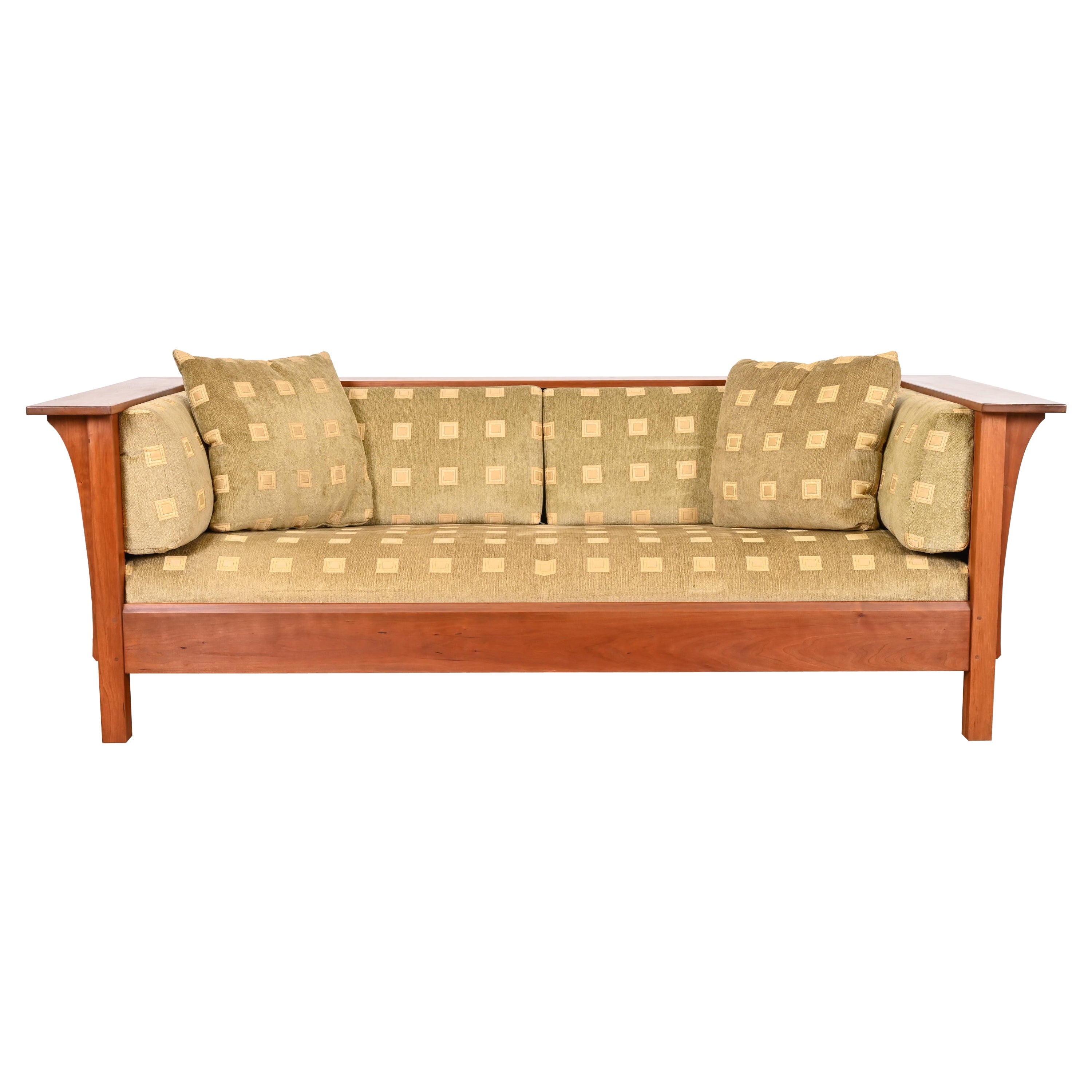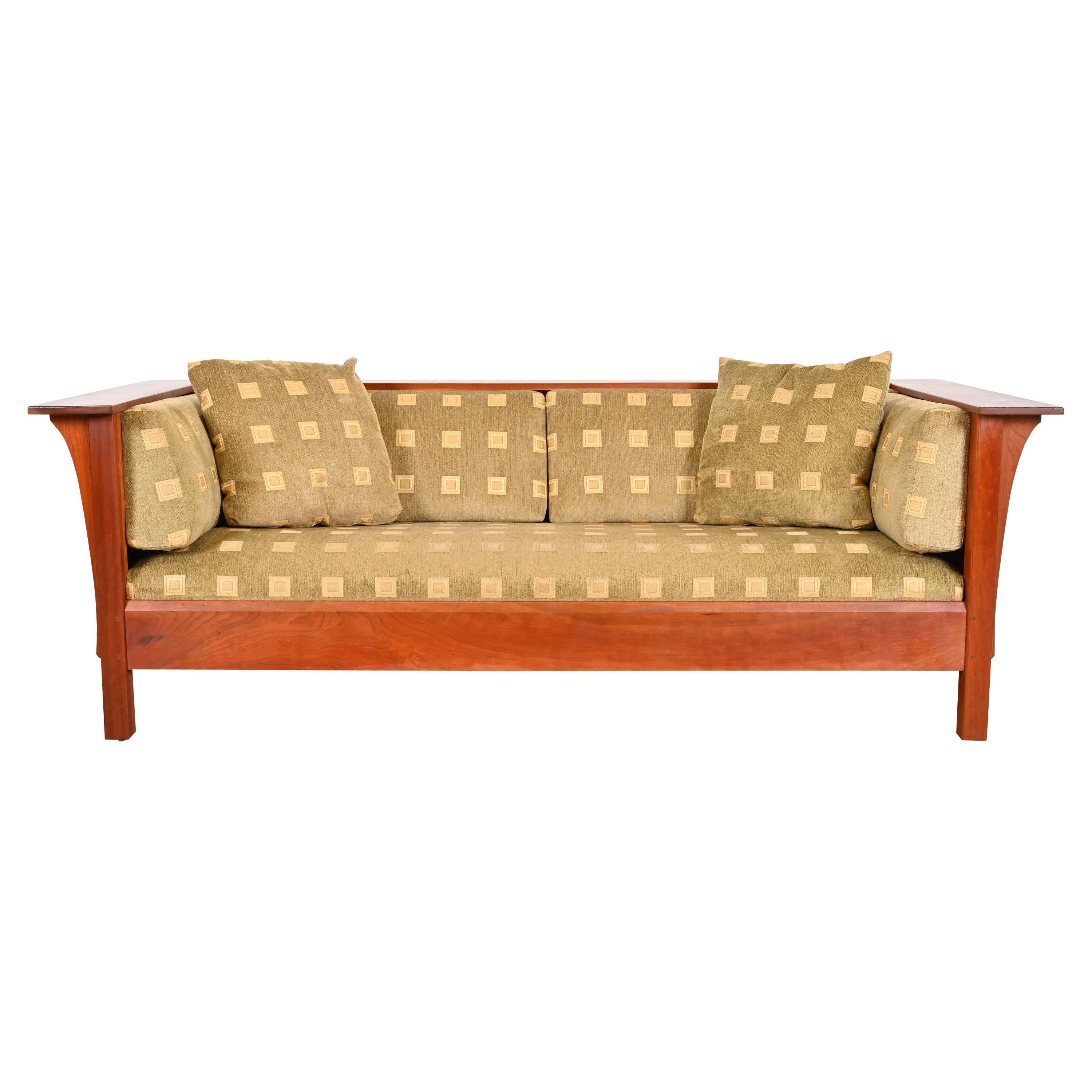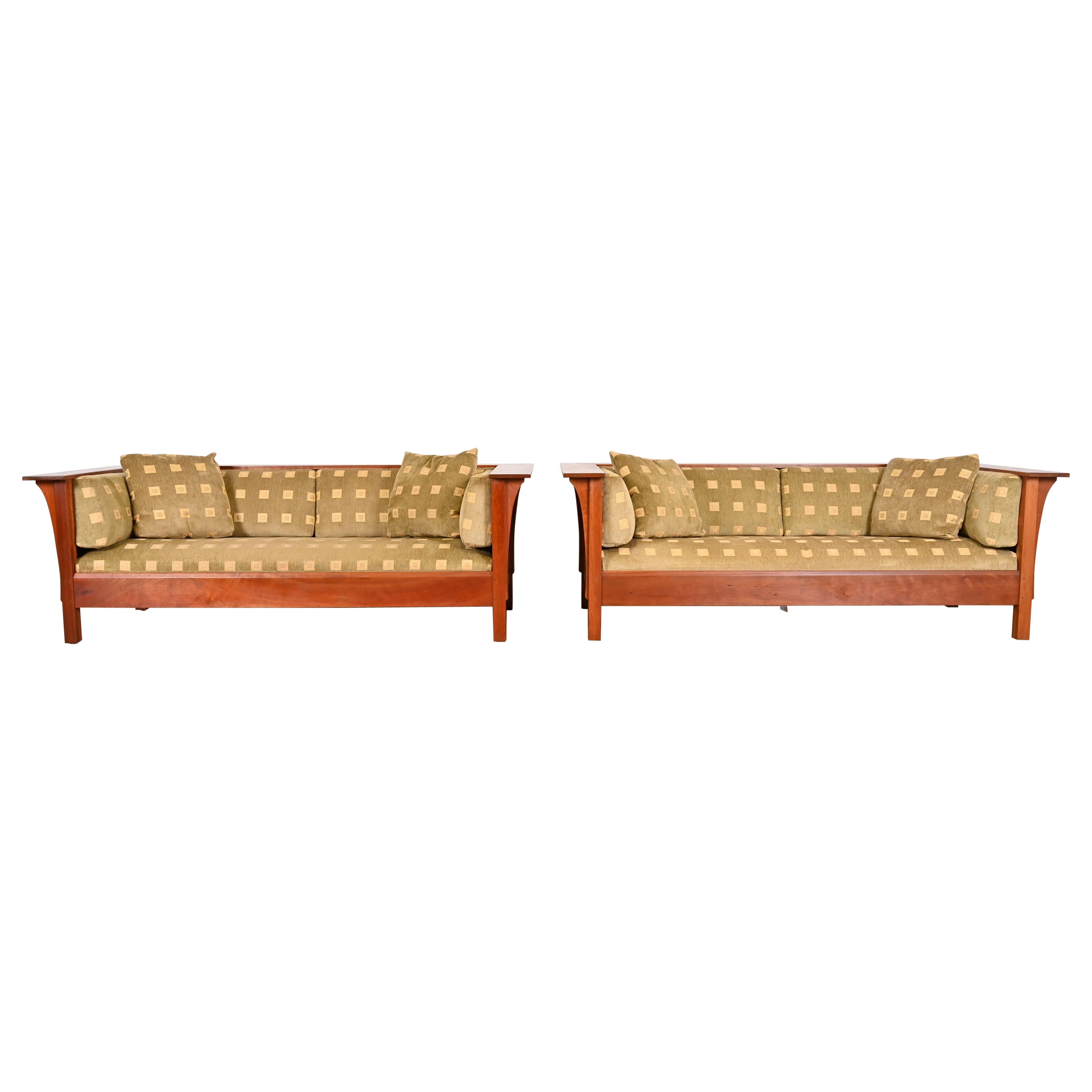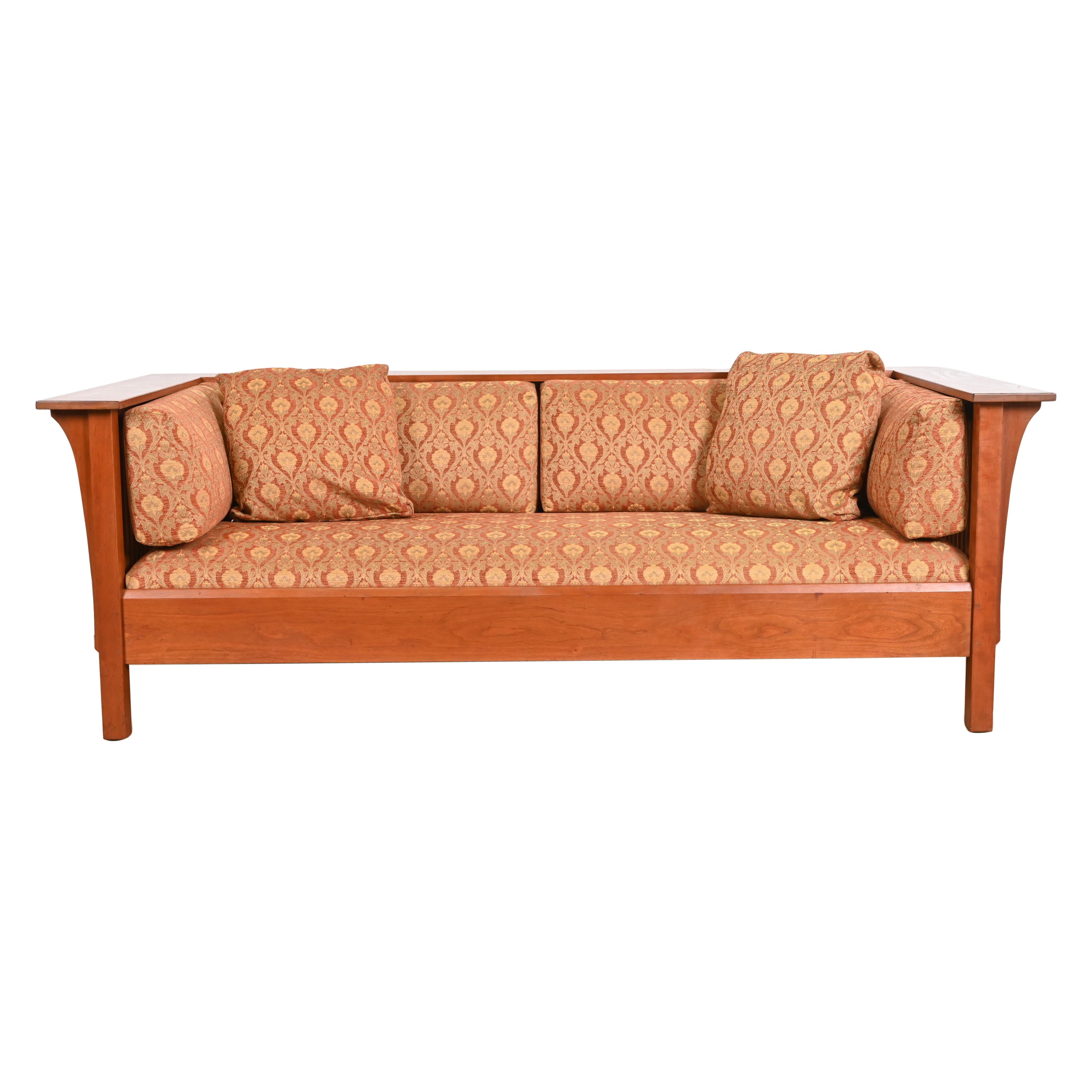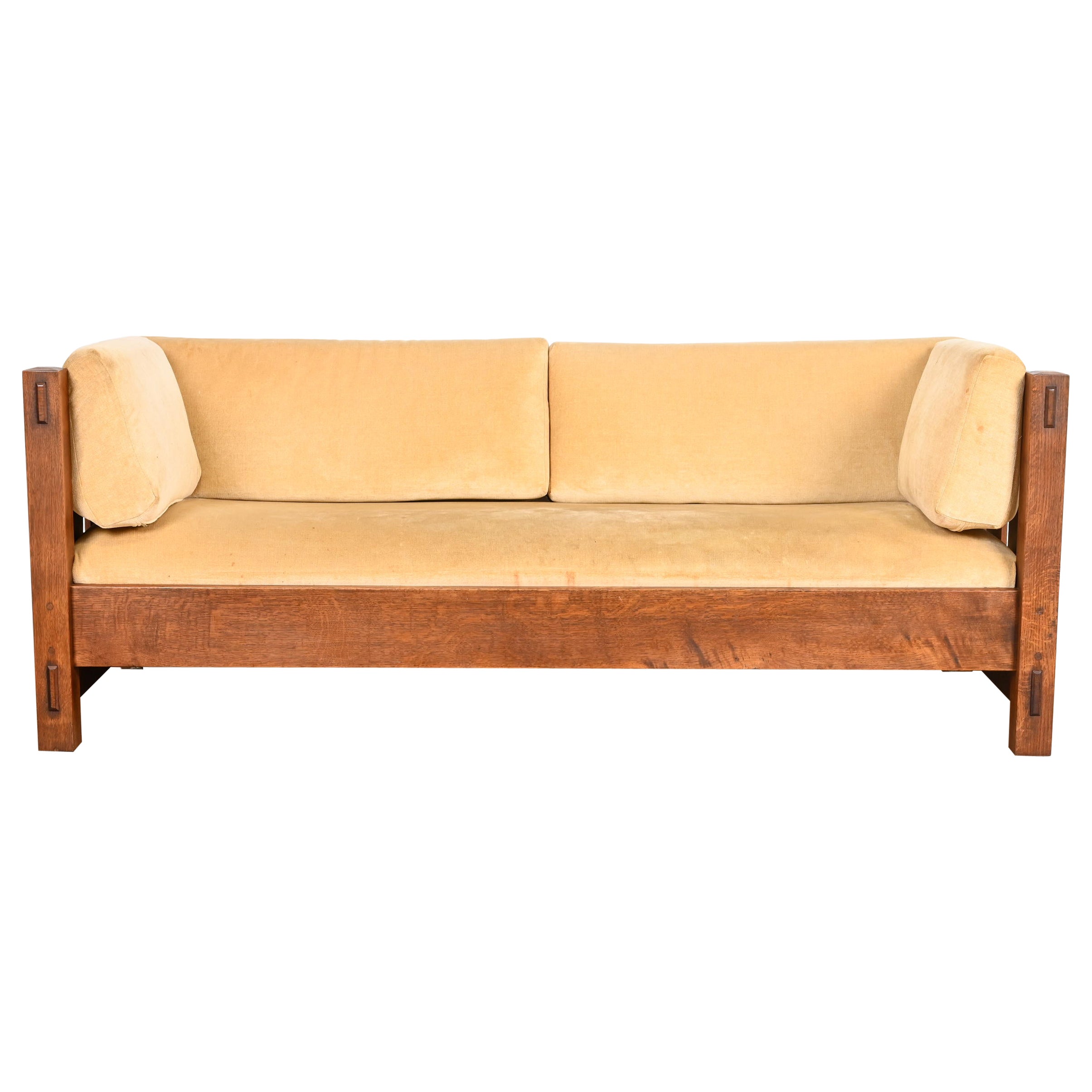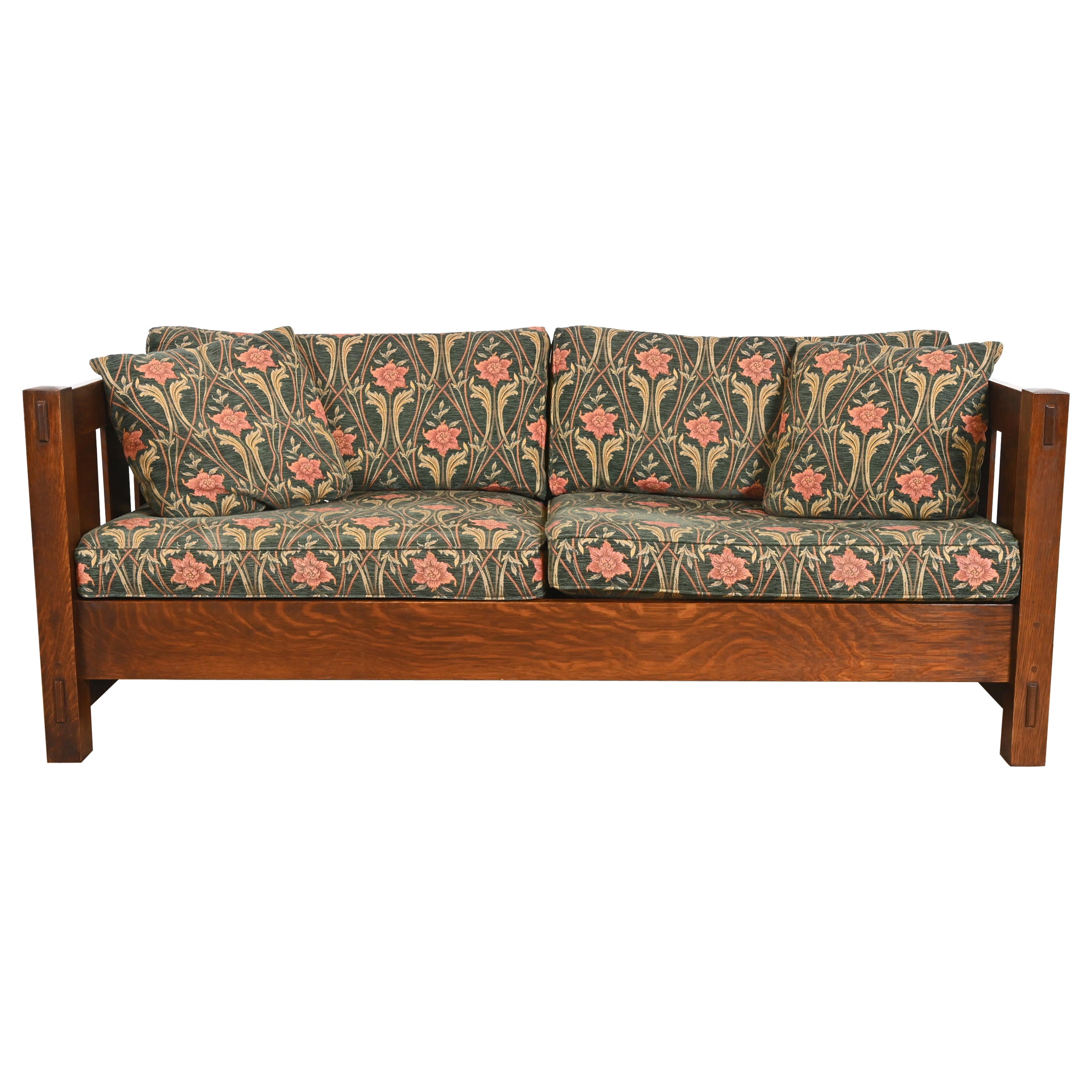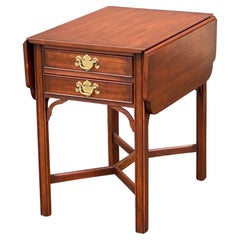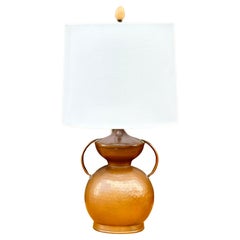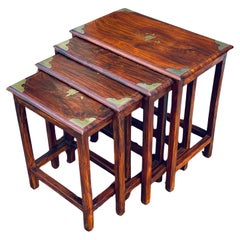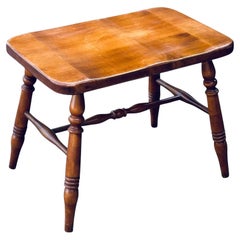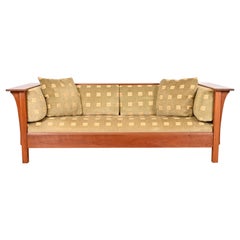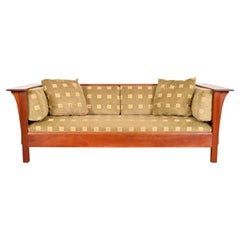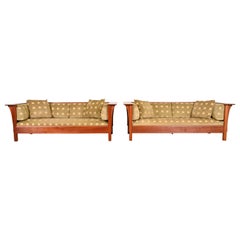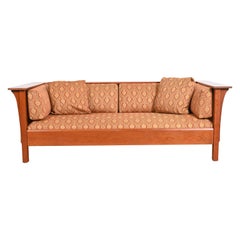Vintage Stickley Prairie Settle Solid Cherry Framed Sofa or Settee
About the Item
- Creator:L. & J.G. Stickley Inc. (Cabinetmaker)
- Dimensions:Height: 29 in (73.66 cm)Width: 84.5 in (214.63 cm)Depth: 37.5 in (95.25 cm)Seat Height: 16 in (40.64 cm)
- Style:Arts and Crafts (In the Style Of)
- Materials and Techniques:
- Place of Origin:
- Period:
- Date of Manufacture:2005
- Condition:Wear consistent with age and use. In very good vintage condition from smoke and pet free home. Structurally sound and sturdy with wear around edges from age and use as pictured. Original upholstery looks good overall with wear from normal usage.
- Seller Location:West Chester, PA
- Reference Number:Seller: Store Item #243141stDibs: LU8277242749632
L. & J.G. Stickley Inc.
Gustav Stickley was one of the principal figures in the American Arts and Crafts movement and the creator of the Craftsman style. In 1883, Stickley established a furniture company called Stickley Brothers with two of his brothers, Albert and Charles. Gustav’s other siblings, Leopold and John George, would later form L & J.G. Stickley Inc. in Fayetteville, New York, in 1905.
As a furniture designer and publisher of the magazine The Craftsman, Gustav adopted many of the ideals of the British design reform movement and popularized both its philosophy and its aesthetics in the United States.
Born in Wisconsin, Stickley moved with his family to Pennsylvania when he was a teenager and began working in his uncle’s chair factory in the town of Brandt. There, he learned the techniques of late-19th-century furniture making at a time when the vogue was for Victorian revival furniture, which was characterized by extensive ornamentation.
When Stickley Brothers foundered, Gustav partnered five years later with salesman Elgin Simonds to form a new firm, Stickley & Simonds, which produced traditional furniture that appealed to the burgeoning American middle class. The success of this venture enabled Stickley to travel to Europe, where he discovered the writings of John Ruskin and William Morris, the two preeminent thinkers of the British Arts and Crafts movement. Stickley also traveled to France, where the Art Nouveau movement impressed him with its imaginative designs and skilled craftsmanship.
Stickley parted ways with Simonds at the turn of the 20th century and decided to focus his creative energies on producing furniture in what became known as the Craftsman style, incorporating some of the elements of the designs and movements he had encountered in Europe.
The pieces Stickley created, which he stamped with the logo of a joiner’s compass, were rectilinear, largely free of ornament, made of oak, and built in such a way that the nature of their construction was plainly visible — all reflections of the tenets of the Arts and Crafts movement. While some people referred to Stickley’s furniture as Mission furniture — a term that references the furnishings of the Spanish missions in California — Gustav commonly called his work “Craftsman” owing to the inspiration he found in the British Arts and Crafts movement.
Stickley benches and rocking chairs were popular, and his leather-upholstered armchairs combine practicality, comfort and an understated silhouette. In 1901, Stickley launched The Craftsman magazine, which contained articles on all manner of domestic topics, from gardening and cooking to art and design, as well as poetry and fiction. In addition to popularizing Stickely’s own designs, the magazine acquainted Americans with the Arts and Crafts style in all its forms through its graphic design and the bungalows, art pottery, and hammered-copper lamps pictured in its pages. When Gustav Stickley died, in 1942, Arts and Crafts had been replaced by modernism as the favored aesthetic.
The work of L & J.G. Stickley flourished even as the Arts and Crafts style fell out of fashion because Leopold and John George adapted to the changing times.
L & J.G. Stickley changed their brand name and maker’s mark to Handcraft in 1906, and rather than continue to produce Arts & Crafts-inspired designs, their bedroom furnishings, dining room chairs and other items of the era reflected the influence of Frank Lloyd Wright and the Prairie School style as well as the work of the Wiener Werkstätte. Later, Leopold’s Cherry Valley collection appealed to enthusiasts of American Colonial furniture.
Find antique L & J.G. Stickley tables, seating, case pieces and more on 1stDibs.
- ShippingRetrieving quote...Shipping from: Chadds Ford, PA
- Return Policy
More From This Seller
View AllLate 20th Century American Chippendale Drop-leaf and Pembroke Tables
Cherry
Early 20th Century American Arts and Crafts Table Lamps
Copper
Late 20th Century Hong Kong Anglo-Indian Nesting Tables and Stacking Tables
Brass
Mid-20th Century American American Colonial Benches
Maple
Late 20th Century American Post-Modern Coat Racks and Stands
Steel
Mid-20th Century American Louis XVI Coffee and Cocktail Tables
Walnut
You May Also Like
21st Century and Contemporary American Arts and Crafts Sofas
Upholstery, Oak
21st Century and Contemporary American Arts and Crafts Sofas
Upholstery, Oak
21st Century and Contemporary American Arts and Crafts Sofas
Upholstery, Cherry
21st Century and Contemporary American Arts and Crafts Sofas
Upholstery, Cherry
Late 20th Century American Arts and Crafts Sofas
Fabric, Upholstery, Oak
Late 20th Century American Arts and Crafts Sofas
Upholstery, Oak
